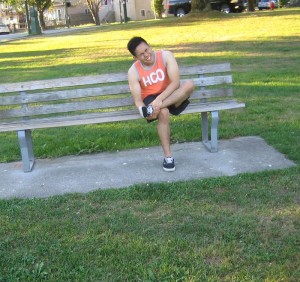Swollen legs and feet is also known as peripheral edema. It is a painful and uncomfortable condition and with the swelling, there is difficulty in putting on socks or shoes properly. Swollen legs and feet can be caused by long periods of sitting or standing and also during pregnancy, but sometimes the swelling can be caused by some underlying conditions such as kidney or liver disease.
Other causes of swollen legs and feet
- Menstrual periods
- Injury or trauma on the legs and feet
- Being an overweight person
- Blood clot
- Infections
- Burns
- Surgery
- Varicose veins
- Taking certain medications
- Bites or stings from insects
- Venous insufficiency which is a problem of the veins of pumping blood back to the heart.

Treatment
- Minimize intake of sodium in the diet since high level of sodium in the diet causes swelling and accumulation of water in the body.
- Drink plenty of liquid at least eight glasses every day. Water helps in flushing out extra sodium found in the body and also lessen swelling of the feet and legs. Avoid drinks that contains caffeine and these drinks also contain sodium and can cause accumulation of fluids in the body.
- Elevate the feet above the level of the heart every day to help promote the flow away from the feet and leg which reduces the swelling. Another way is sitting on a chair and prop the legs and foot up using one or two pillows to cushion the inflamed tissue.
- Wear a support hose can help promote proper circulation of blood and compress the swelling as well as reducing the uncomfortable effects.
- Massage the feet using firm movements to help with the removal of extra fluids in the feet.
- Soak the affected leg and feet in tonic water. Take note that the quinine and bubbles helps minimize the inflammation.
- Take a bath using Epsom salts since it helps in minimizing inflammation and pain of the affected leg and feet as well as relaxing the muscles.
- Perform short walking and exercise breaks if sitting for long periods of time such as riding in a car or a plane ride. Walking and exercises breaks helps increase circulation and movement of fluids in the legs and also helps pump fluids away from the legs and back to the heart.
- Wrap an ice pack using paper towel or a piece of face towel and place on the affected area at least for 3 minutes at a time. Avoid placing the ice directly to the affected area in order to prevent damaging the nerves found in the foot or leg. Remove the ice pack after 3 minutes and then repeat it again until inflammation is reduced.
- Take the prescribed pain medications and anti-inflammatory medications such as Tylenol, ibuprofen and Advil. These medications help in minimizing inflammation and lessen the painful side effects.
